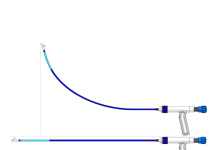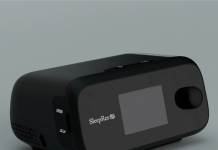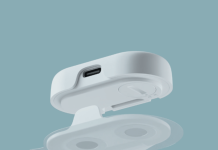Ocutech, Inc., in collaboration with electrical, software and mechanical engineering experts, has announced the limited first release of a new ultrasonic sensor device. SideSight will allow individuals who have experienced loss of side vision (Hemianopia) to walk safely without concerns of bumping into obstacles or being startled by individuals walking into their path. The device is scheduled to start clinical testing in the fourth quarter of 2024.
Related: Enovis unveils new ankle replacement system
Ocutech says it is estimated that there are between 500,000 and 1 million individuals in the US who have a one-sided loss of their vision, called Homonymous Hemianopia (HH) (also called Homonymous Hemianopsia). While HH is most frequently a result of stroke, it can also come from a range of other causes amongst them head trauma, brain tumours and developmental disorders.
HH is not the same as loss of vision in one eye, as individuals with no vision in one eye can still see to both sides of their line of sight with their remaining eye. Not so with HH. In Homonymous Hemianopia, depending upon which half of the brain is impaired, neither eye will have vision to the affected side.
If the right brain is involved, the vision loss is on the left side, and if the left brain is affected the right visual field will be lost. HH can have a more profound impact on visual functioning, mobility and independence than does loss of one eye.
According to the company, traditional eyeglass options designed to treat HH contain one or more prisms that either move the image to make it easier for the individual to scan into the non-seeing visual field, or create a second image that is superimposed over the normal visual field to help the wearer be aware of obstacles in the non-seeing visual field. These prismatic eyeglass techniques require training, practice and adaptation and can be both fatiguing and cognitively demanding.
The SideSight development project is led by Henry Greene, OD, FAAO, co-founder and president of Ocutech, Inc.
“After two years in development and testing we are very pleased with the response from our demonstrations to both patients and vision rehabilitation specialists regarding its performance and potential value,” said Greene. “The SideSight will monitor the 45 degree field of view both horizontally and vertically on the non-seeing side. This is the area of the visual field that studies have shown is the most prone to collisions for individuals with HH.”
Similar in concept to the blind-spot monitor on the sideview mirrors of modern cars, use of the SideSight will be easy, intuitive and with a negligible learning curve says Ocutech. The device is lightweight at 0.6oz (20gm) and is about the size of a pinky finger. The company says the firmware is designed to allow the device to be helpful but not intrusive.
Its vibration will alert the wearer to look into the non-seeing visual field to avoid a collision but will not repeat the same warning. SideSight can be attached to conventional eyeglasses using either a clip-on or a magnetic attachment method, and can operate for 12 hours on its rechargeable battery.
Plans call for limited availability of this FDA and CE registered device in mid 2024 says the company.






